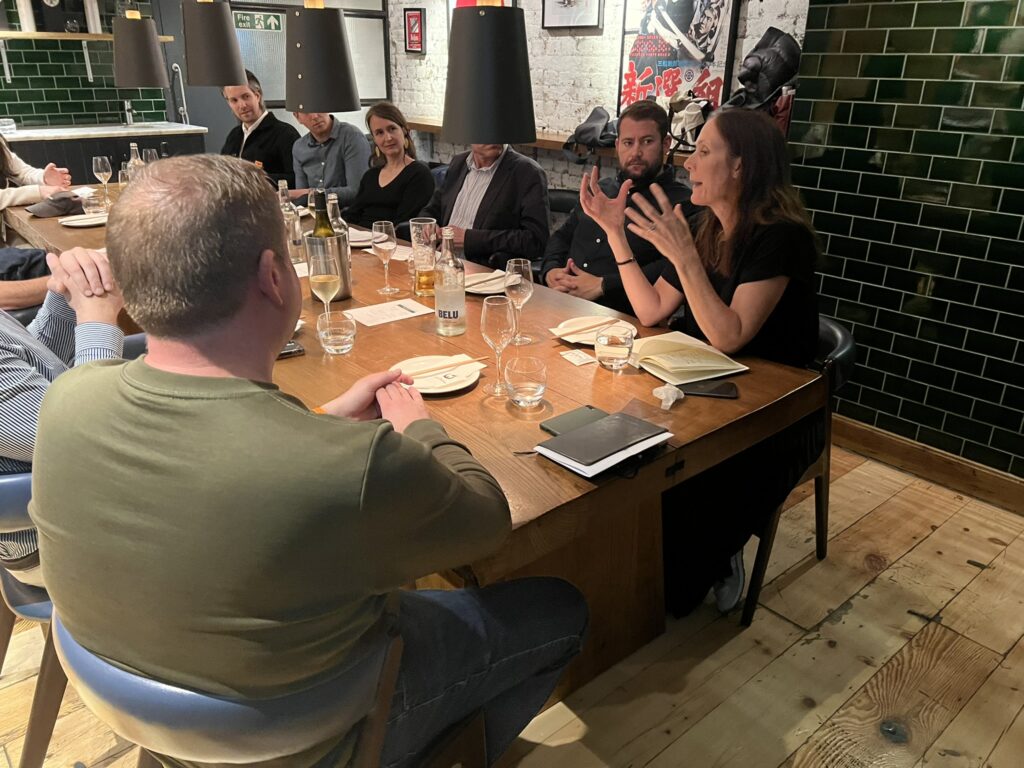Given the sheer array of potential media touchpoints where a brand’s target audience may consume content, how can TV broadcasters best meet the demands of advertisers in relation to measurement?
New Digital Age, in association with Comscore, recently invited industry leaders from some of the UK and Europe’s leading broadcasters to discuss the issues surrounding multi-channel measurement in more detail.
NDA editor Justin Pearse chaired the conversation, where he was joined by (among others) Richard Brant, Senior Director, Advanced TV, Vevo; Lucy Bristowe, Director of Research, Sky; Ian van Der Putten, European Marketing Director and Business Development, OUTtv; Alex Hodge Warner Bros. Discovery, Head of Digital Ad Sales and Innovation; Adam Middleton, Senior Creative Strategist, Channel 4; and Ira Xhelili, Senior Sales Director, Comscore.
Hodge of Warner Bros. Discovery warned that the quest for any form of ‘unified’ cross-platform media measurement standard may be a red herring:
“The key problem is we’re trying to measure apples for apples, but unfortunately some apples are green and others are red. We’re looking for a unified measurement solution that encompasses all channels but the reality is that how you measure within TV is actually quite different to how you measure in a social environment. Likewise, brand campaigns have very different KPIs to those of performance campaigns.
“For me, it’s not about finding one way forward; it’s about adjusting your measurement strategy to capture the KPIs you need in whatever platform you’re using. It’s carried over from both programmatic display and the social platforms into TV that clients want to measure everything they can without really knowing why. I think publishers and broadcasters can afford to challenge brands a little bit more about what it is they are actually trying to achieve.”
Brant agreed that brands and broadcasters alike should embrace the multi-touchpoint media landscape and the challenges it presents for measurement.
“Vevo’s content is broadcast level in terms of what we actually deliver. Many music videos have really high production values, worth millions of pounds per minute. For younger viewers, who can be hard to reach in a traditional TV environment, ‘trust’ is more about the origin of the content rather than the way it’s being distributed.
“At Vevo, we want to deliver music videos to as many people as possible in their natural viewing environment. We’re at the whim of the viewer. That’s our whole business model. So if they want to watch a Beyonce video on a TV screen via the YouTube app or Samsung TV Plus, we’re there. In the UK, we reach half the country every month, and 12 million of these viewers are doing so through a TV screen, because that’s their preference.”
Brant added: “We’re as extensive with our measurement partners, as we are in terms of our distribution. We will work with the measurement company that is the preference of the buyer, so long as they are capable of doing so across our network.”
A fragmented picture
Van Der Putten of OUTtv, the world’s leading LGBTQ+ TV channel and streaming service, discussed how his organisation, as a team of only thirty people, recently decided to reduce the volume of data they were collecting for measurement purposes.
“We’re currently working on a project internally to figure out what data do we actually need and what are the KPIs we want to capture? Also, as an international broadcaster, we need to consider the privacy laws of different countries and everything that’s connected to that. Where are there gaps in our knowledge that we need to fill?”
Addressing the fragmentation of the media landscape, van Der Putten commented that, even when addressing a niche audience such as the LGBTQ+ community, a multi-channel approach is often recommended.
“While it’s true that a lot of LGBTQ+ people live in major cities, there’s also a large number of LGBTQI+ people who live in the suburbs and smaller towns and villages, living their nine-to-five lives and our platform is a window to a world they can be part of, from the safety of their own living room. These audiences still want to watch the same content, but we just have to reach him in a different way and via various channels.
“For example, we also have a YouTube channel that’s one of the biggest for queer cinema in German speaking territories. The interesting thing is it has to look like it is being run as a hobby, because there’s a huge audience that loves the content, but if it seems too commercial or ‘rainbow branded’, they don’t want to see it.”

On the subject of fragmentation in brand’s media strategies, Sky’s Bristowe commented that, until recently it suited the ad industry to maintain the silos between brand and performance campaigns because that was how the major media agencies had set up their businesses.
“The reality is that we all now have sophisticated tools which allow us to measure both brand and performance KPIs from a single campaign. Things don’t have to be siloed anymore. If clients have a clear idea of what they’re trying to achieve and what they’re trying to measure, we can usually find a way to do it well.
“There are advertisers who are really good at this. Namely, the ones who are asking questions and testing their assumptions. Maybe they’ve been planning their campaigns with an average frequency of five and they want to test a frequency of three or eight. They have a clear idea of their KPIs and they’re learning more all the time.”
Bristowe points to the fact that traditional UK linear TV broadcasters (and their streaming platforms) are subject to a host of legacy rules and regulations that their online media competitors do not have to comply with. “Unless the way we are governed changes, there will be occasions when our hands are tied on how we can position an ad, which, in turn, has implications for optimisation and measurement.”
A transition of trust
Channel 4’s Middleton pointed out that, as a broadcaster offering cross-platform solutions to brands, the need for trust in multi-touchpoint measurement has never been more important.
“I think the level of trust in TV is also transitioning to digital channels and it’s happening pretty quickly. ‘Digital first’ is becoming a bigger part of our strategy all the time and measurement is a huge part of that. If, for example, I’m in control of a media budget for a client who wants to target a specific audience, I need to trust the measurement capabilities in place to ensure this spend is used in the most effective ways possible.”
Xhelili of Comscore closed off the conversation with the acknowledgement that, in terms of cross-platform media measurement, there are still lots of questions to be answered and that conversation and collaboration offer a way forward.
“We need to measure what matters as opposed to measuring for the sake of it. What is it that really brings value to the table? Are the things we are measuring going to help us connect all those touch points? Are we gathering the right data and building the data sets we actually need to make measurement matter, rather than just producing a bunch of numbers that don’t really help us?”
“At Comscore, we believe that every screen and every person counts. Our solution deduplicates across all formats, platforms and devices to report on a total person-level view. As we move forward, while different markets have different practices and different reporting requirements, we’ll do whatever we can to help advertisers cope with the fragmented marketplace and understand the true reach of their campaigns.”
Xhelli added: “Ultimately, we need more collaboration between players to achieve the level of consistency in measurement that advertisers are looking for and we’ll do whatever we can to help facilitate those conversations.”












